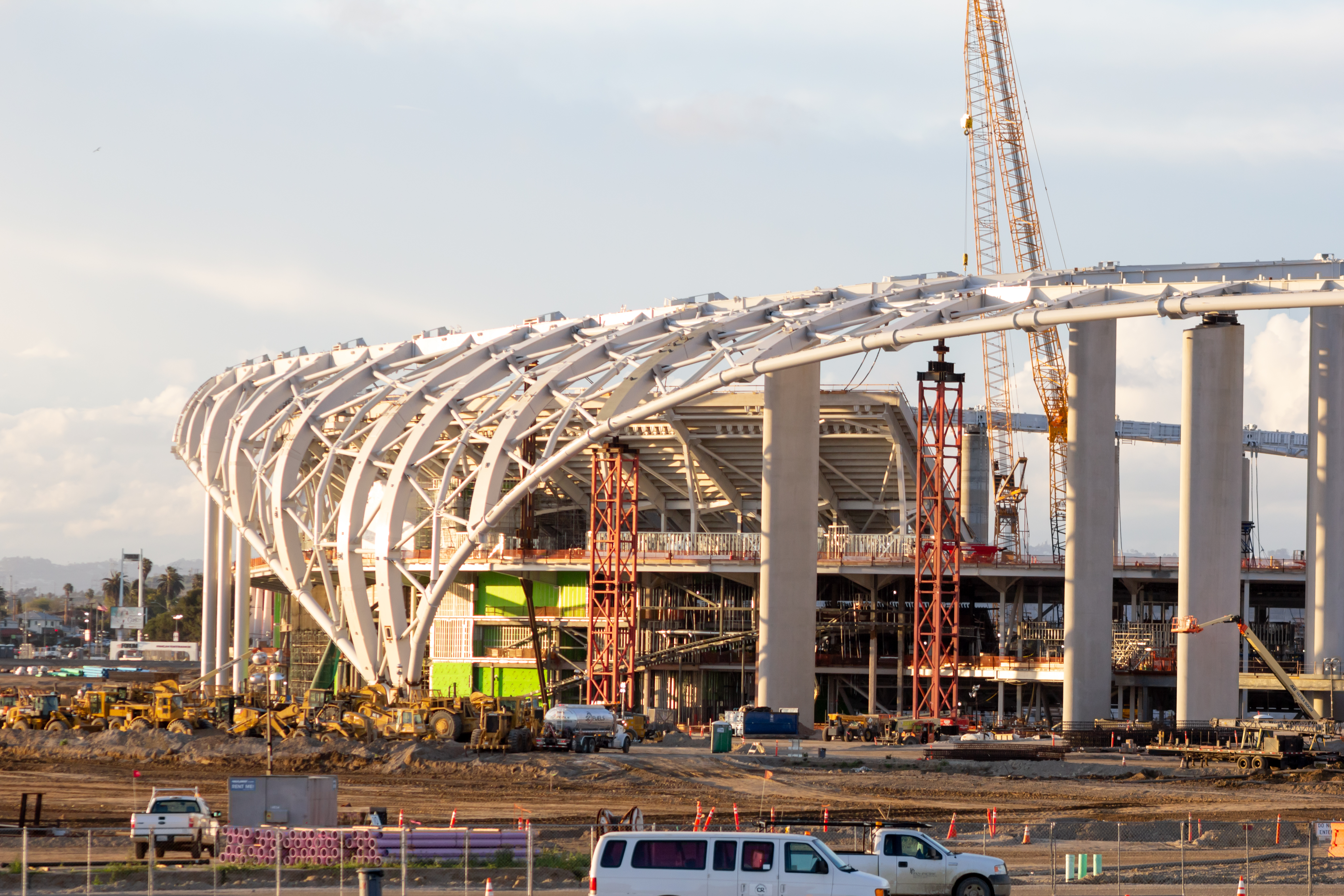Downtown Los Angeles stadium planner's study appears to overstate expected tax benefits
An annual Pac-12 championship. Boxing matches with consistent knock-out audience sizes. A Super Bowl-sized mega-event each year.
These are among the outsized engagements that Anschutz Entertainment Group counts on luring to the NFL stadium it wants to build in downtown Los Angeles in order to generate tens of millions in state and local tax revenue.
The sports and entertainment firm has dangled that tax bounty before officials in its efforts to garner public support for its plan to build a venue for an NFL franchise in a city that has been without a team since the Raiders and the Rams left the region within months of one another some 16 years ago.
Council members cited the project's economic impacts when they voted to approve a memorandum of understanding with AEG that sets the stage for future binding deals between the city and the developer.
But a close reading of an economic study that AEG released last month shows that the promise of a sales and property tax windfall appears to be overblown.
It anticipates a highly optimistic number of events, some of which would not be new to the region. And a chunk of the tax revenue included in the tally is apparently already spoken for by other projects.
AEG wants to build its $1.2 billion stadium known as Farmers Field on the city's convention center campus. The plan approved by the City Council anticipates the issuance of $275 million in tax-exempt bonds for the relocation of a convention center building that now stands where the planned 72,000-seat venue would be built.
The framework deal with the city requires AEG to secure a NFL team before any work on the project, which would start with the convention center relocation, could begin.
AEG president and CEO Tim Leiweke told reporters this week he's been in touch with team owners about a possible move to Los Angeles, but declined to identify likely candidates or say whether any formal negotiations had begun. He said no move would be announced until the end of the 2011-2012 football season.
The financial study, completed by consultancy Metropolitan Research and Economics primarily using data provided by AEG, estimates that new economic activity from the stadium and improved convention center would result in $41.8 million in annual tax revenue for city, state and other public entities.
The study released by AEG sees some $22.1 million in city taxes being generated, including $11.6 million that would come from hotel room taxes.
Yet, two of the largest hotel offerings in the area got breaks on those taxes to spur their development.
.png)


.png?width=170&height=64&name=Logo%20320x120(2).png)
